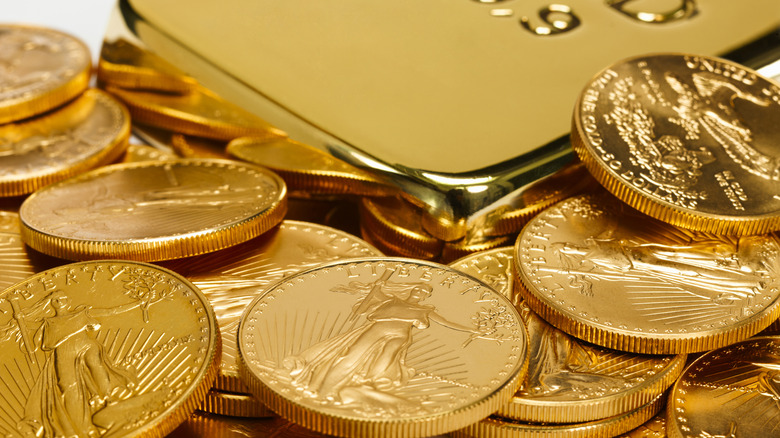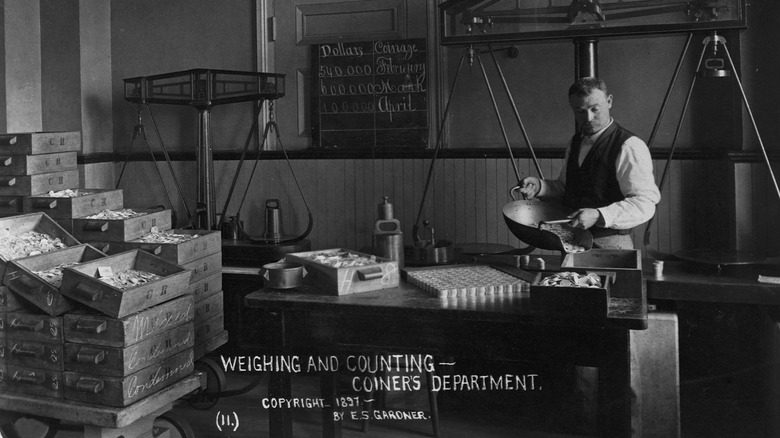Everything We Know About Kentucky's Civil War-Era Gold Hoard
A Kentucky man made the find of a lifetime when he unearthed hundreds of Civil War-era coins in his cornfield, The Independent reports. The rare coins are made mostly from gold (a few are silver) and date from 1840 to 1863. Referred to as the "Great Kentucky Hoard," they are worth millions collectively and could be relics from a time period when they were stashed for safekeeping.
Speaking to Live Science, Georgia Southern University conflict archaeologist Ryan McNutt said Kentucky was neutral when the coins were stashed, and whoever owned them may have buried them in advance of Confederate General John Hunt Morgan's many raids in the area. He said that wealthy Kentuckians have long been rumored to have done so, concealing their Union sympathies or obscuring their financial dealings with the North.
Speaking with Louisville news outlet WAVE-TV, coin expert Byrd Saylor said, "If you had a lot of money, historically, you buried it." Banks were often robbed in this period, and wealthy individuals had to find other ways to protect their valuables. "You had to find a place that was secure," Saylor said. "In most times throughout history, people bury money. What happens if you bury money and get killed? It stays in the ground."
A rare collection
Among the Kentucky man's discovery were a number of $20 Liberty coins without the "In God We Trust" inscription — put on the currency in 1866 — adding to their value and rarity. Several coins in the hoard were also manufactured at the now-defunct New Orleans Mint, which operated from 1838 to 1861 and again from 1879 through 1909. The man also found extremely rare examples from the short-lived Dahlonega Mint in Georgia, which was only active from 1838 to 1861.
In a press release announcing the discovery, rare coin expert Jeff Garrett said, "[T]he stunning number of over 700 gold dollars represents a virtual time capsule of Civil War-era coinage ... Finding one Mint condition 1863 Double Eagle would be an important numismatic event. Finding nearly a roll of superb examples is hard to comprehend." (The interior of the old New Orleans mint can be seen above.)
The collection will go to market
The location of the find is confidential for safety reasons, and once the collection was cleaned and appraised by the Numismatic Guaranty Co. (NGC), many were deemed in excellent condition. Some were likely never in circulation, USA Today reports. In an interview with WAVE-TV, numismatic appraiser Andrew Salzberg commented on the find: "Underneath were just these phenomenally beautiful, preserved coins. And I think they were preserved so well because they weren't exposed to air, and they were buried in the ground."
Once certified by NGC, coins from the "Great Kentucky Hoard" are expected to hit the market. Since they were discovered on private property, U.S. law deems that the final fate of the artifacts of value is entirely up to the landowner. Conflict archaeologist Ryan McNutt says this means some priceless historical information might be lost about the person who once owned the rare valuables, why they hid them, and why they never retrieved them. "As a conflict archaeologist, I find this loss of information particularly frustrating. ... [I]t's a snapshot of the past, lost forever," McNutt told Live Science.
The total value of the Great Kentucky Hoard is expected to exceed $2 million. Video of the discovery can be seen above. In the footage, the unnamed individual can be heard calling the find "the most insane thing ever".

